When a Safety Measure Becomes a Risk Accelerant: Removing the Option to Blast-In-Place When Clearing Explosive Remnants of War
By Lieutenant Colonel Geir P. Novik [ Norwegian Defence Research Establishment ]
CISR Journal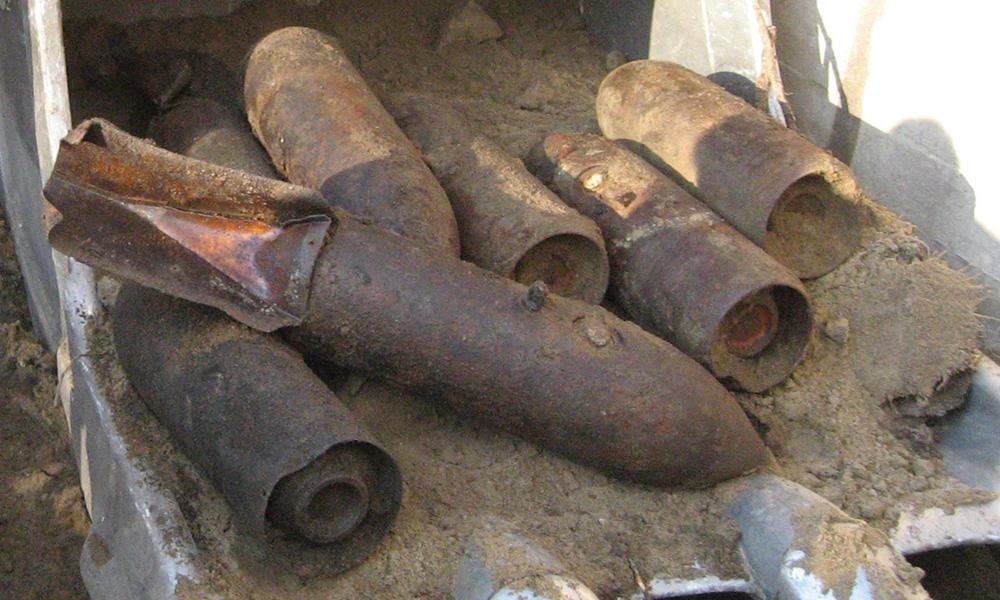
This article is brought to you by the Center for International Stabilization and Recovery (CISR) from issue 27.1 of The Journal of Conventional Weapons Destruction available on the JMU Scholarly Commons and Issuu.com.
The legacy of unexploded ordnance (UXO) and abandoned ammunition following armed conflict will, in many cases, have a severe impact on society and daily life, even for years or decades after hostilities end. These explosive remnants of war (ERW) represent a grave threat in many aspects, and the human, societal, and environmental impact can be severe. These explosive objects must therefore be located and disposed of—a job in itself that involves serious risks. Therefore, various safety measures are implemented to mitigate these risks. Some safety measures, however, could prove to have less than the desired effect, and in the worst cases, could even increase the risk.
Introduction
ERW contamination is a major problem in many countries, especially those that have experienced armed conflict in recent years. Munitions can remain intact and functional for decades, and even centuries, after the end of hostilities, resulting in a great number of countries where they still represent a severe threat.
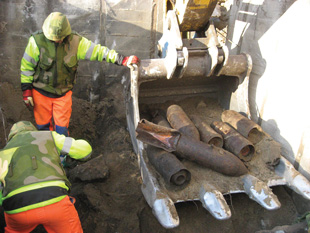
Unearthing vast quantities of explosive remnants of war (ERW). More than eighty unexploded German WW2 aircraft bombs were discovered in the center of a Norwegian village. Image courtesy of Geir P. Novik.
Clearance of ERW is therefore a prioritized task in many affected countries and is recognized as a vital risk-reduction tool. ERW—UXO and abandoned ammunition—represent serious risks in several aspects, both humanitarian and societal, as well as economic and political. We need only look at the numerous unintentional explosions and accidents involving ERW all over the world each year to recognize how this can affect human life and societal values. Furthermore, there is increasing concern that the leaking and bioaccumulation of toxic constituents from corrosive munitions threaten ecosystems, as several of the chemicals used in ammunition are known to be highly poisonous and carcinogenic and have been proven to contaminate living organisms and the surrounding soil and groundwater. To deal with these risks, the majority of countries that deal with ordnance put in place legislation, regulations, and provide detailed instructions, as well as implement safety measures that regulate what can and must be done in order to mitigate the risk of explosions.
Safety measures can be implemented for a variety of reasons. First and foremost, there is a desire to protect against danger, risk, and injury. We also seek to further develop existing good practices to ensure that our efforts not only do no harm but also, to the greatest extent possible, to consider and reduce any environmental impacts as a result of our actions. There could also be safety measures that are implemented for legal, economic, or political reasons. Consequently, there are a great number of possible standards that can regulate ERW clearance, as well as several local, self-imposed restrictions. We see, however, that several of the implemented safety measures do not always have the intended effect and can, in fact, have the opposite effect to what was originally intended.1,2
One of the ERW-related safety measures that is being discussed and that has already been implemented in several countries is to reduce the environmental hazards related to underwater high-order detonation (i.e., an exothermic reaction wave which follows, and also maintains, a supersonic shock front in an explosive)3 techniques by effectively banning the procedure. As environmental concern is increasing in society in general, so are the demands for and expectations of environmentally friendly ERW-clearance processes, and rightfully so. However, many contributors to the debate do not differentiate between various disposal techniques when discussing potential environmental consequences, and it seems obvious that there could be unidentified and unintended consequences of eliminating one of the most used ERW-disposal procedures. Moreover, alternative procedures are often presented as quick fixes, not taking into consideration all the potential unintended negative effects these techniques would entail. Undoubtedly, there are various inherent disadvantages and limitations related to all relevant disposal procedures, and in order to make informed decisions, we need to increase our depth of knowledge of what these are and how they can be feasibly mitigated by introducing specific actions.
Choosing the Right Disposal Technique
When clearing ERW, the use of high-order detonations remains the primary disposal method, since it is cost-effective, can be used across a diverse range of munitions and does not require sophisticated infrastructure and equipment.4 It is not particularly resource-demanding in terms of time, cost, and training, and for blow-in-place operations, it normally does not require the use of any specialized tool, equipment apart from basic explosives, or initiators for donor charges. The major disadvantages of employing this methodology, however, are the explosive effects, such as the blast, fragmentation, earth shock, and the generation of flying debris.5 Underwater, the detonations generate low-frequency shock waves and subsequent pulsations of the bubble sphere at high pressure, which can propagate for long distances.6 A high level of impulsive noise poses a serious risk of injury or death to marine mammals and other fauna.7,8,9 As the potential negative effects of high-order detonations are well documented, there is pressure toward discontinuing the use of this methodology in favor of more environmentally friendly techniques.10 Some countries and international organizations already prohibit the use of high-order detonation as a suitable technique for disposing of ERW,11,12 as the environmental impact of this technique is considered too severe.
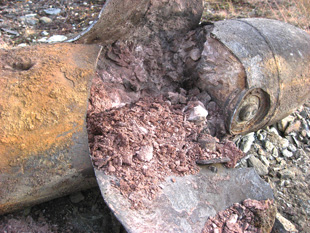
A German SC50 (fifty kg) aircraft bomb following a low-order procedure. Only a small amount of the explosive component was consumed by the deflagration. Image courtesy of Geir P. Novik.
There are some potential alternative techniques to clear ERW without the need for detonation, such as freezing techniques, the use of robotic equipment, water abrasive suspension cutting, the photolytic destruction of explosive substances, etc.13,14 However, these are all relatively resource-demanding and normally require the object to be moved, either remotely or manually, with the subsequent risk of unintentional detonation.
While high explosives are designed for detonation, they can also deflagrate in the absence of shock initiation, provided that the combustion initiates and proceeds under minimal clearance volume so that rapid and localized pressure rise is avoided.15 By employing deflagration techniques (i.e., low-order), the explosive materials often decompose at a rate much below the sonic velocity of the material without requiring any input of heat from another source16 or the introduction of atmospheric oxygen.17 Low-order techniques (i.e., the incomplete initiation of an explosive or one which has detonated at a velocity well below the maximum stable velocity of detonation for a system, being more nearly combustion than an explosion)18,19 has the potential to mitigate the acute blast effects by over ninety percent of those associated with conventional high-order procedures,20 thus reducing the environmental impact through a lower acoustic output.21 Low-order can normally be accomplished by applying a sufficient temperature (e.g., with the use of thermite, a laser, etc.) or by detonating a specially designed small explosive charge (not always feasible due to the specific design features of certain types of munitions or the type or composition of their main filling).
In addition to reducing the explosive effect (i.e., blast, fragmentation, pressure, etc.), low-order techniques would potentially also reduce the amount of metallic debris that a high-order detonation of ERW would produce,22 as well as reduce the disturbance of the sediments and the consequent spreading of harmful substances trapped within the sediments or in their immediate surroundings. As explosive effects are reduced substantially, so is the risk of unintentional sympathetic detonations of undiscovered munitions in the ground or in sediments that could otherwise detonate through detonation transfer. Consequently, this technique would not be suitable for intentional sympathetic detonations. Using low-order techniques, with their significantly reduced probability of high-order detonation-level effects, would also mean that some ERW do not have to be relocated, thereby preventing the potential damage resulting from an unintentional detonation during relocation.23 Nonetheless, as low-order techniques are not one hundred percent reliable, all relevant measures (e.g., safety, surveillance, etc.) would still be required in the same ranges expected for high-order detonation. Consequently, if a high-order detonation is not acceptable at a specific location, the ordnance is still required to be relocated, even if a low-order technique is being conducted due to the possibility of a deflagration-to-detonation transfer.24 This is especially relevant whenever aging and deteriorating ERW are encountered, as positive identification is not always possible and the technical condition of the munitions—e.g., the thickness of the munition casings—could vary from object to object due to individual and local properties, such as metallurgic composition, main filling composition and condition, environmental conditions (e.g., salinity, temperature, current, etc.), and others. Therefore, low-order techniques should be used with caution, as relatively small individual variables could result in not only deflagration but also high-order detonation or no reaction.25
Simultaneous operations on multiple objects in close proximity would also be challenging, as there is a risk of high detonation in some objects and no-reaction results in others, potentially resulting in some objects being moved or covered in sediments and left undetected. The possibility for the undesired effects involved with low-order techniques entails that one must plan not only for a possible high-order detonation but also for repeated actions on individual objects in case of no reaction. Therefore, it could be expected that using low-order techniques on ERW would be more time-consuming compared to employing high-order detonations. Furthermore, depending on how the technique is employed, it could also require specific training and a high level of personnel specialization,26 and care has to be taken to ensure that the low-order charges are placed correctly according to the specifics of the individual object design (i.e., the location of vital internal components). As the low-order technique regularly consumes (deflagrates) only parts of the explosive filling in the munitions, sufficient time should be added for the cleanup of unconsumed residual explosives for each object. It must be expected, however, that the majority of particles—which range from micrometers to centimeters in diameter—are unsalvageable and will be deposited in the environment. Therefore, the unconsumed residual explosive constitutes a potentially significant source of explosives for environmental receptors27 and could pose a great environmental threat.28 Explosive chemicals, such as RDX, TNT, and its derivatives, are known for their toxicity and carcinogenicity29 and have been proven to contaminate living organisms, as well as the surrounding soil and groundwater.30 Dispersed granular particles are easily ingested,31 and several recent studies have raised concerns about increasing levels of poisonous chemicals used in ammunition being detected in marine life.32,33,34 Therefore, these chemicals may also enter the marine food chain and directly affect human health upon the consumption of contaminated seafood.35 Furthermore, there is a risk that some fuzes, boosters, and/or parts of more sensitive primary explosives could be separated from the munitions, leaving the most sensitive part of the ERW behind. This would increase not only the risk for the operator when removing all debris from the low-order procedure but also the risk of leaving behind potentially deadly explosive objects.
In contrast, a high-order detonation of ordnance will also normally leave some energetic residue in the impact area, but this is generally very little.36 High-order detonation as a result of live fire operations will consume virtually all energetic material in the ordnance, while high-order detonation as a result of blow-in-place operations using a donor charge is normally expected to consume about 99–99.9 percent of the main charge.37,38,39 As a rule of thumb, it normally takes 10,000 to 100,000 high-order detonations to deposit the same amount of explosives as one low-order deflagration.40 This is especially vital, as some ERW are cleared not because they pose an immediate explosive risk but because of the potential environmental threat the dispersal of explosives would represent in case of present or future deterioration of munitions casings. Furthermore, it is imperative to recognize the dissimilarities of the techniques in terms of explosive residue, as many, specifically those who are not part of the EOD profession or experts in the field, do not differentiate between the techniques when discussing potential environmental consequences.41,42
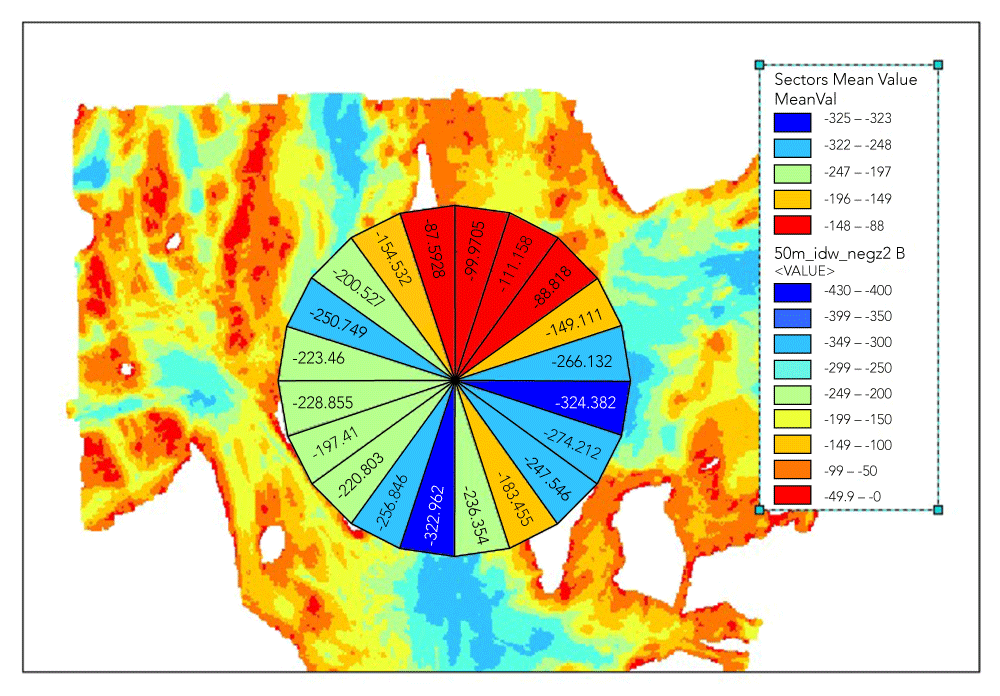
Figure 1. Example of an interactive decision tool based on shock wave propagation and a geographic information systems program that contains updated information on fisheries activities, environmentally protected areas, aquaculture sites, etc. Figure courtesy of P.H. Kvadsheim (Norwegian Defence Research Establishment).
Identifying Solutions
First, we should recognize the advantages of using low-order techniques, especially their potential to mitigate many of the negative effects related to high-order detonations, such as the possibility of causing severe injury or death to marine mammals and other fauna. However, we must also acknowledge the most serious limitations and negative effects of the low-order technique: the dispersion of substantial quantities of toxic material into the environment. This risk can be mitigated a great deal by removing all identifiable pieces of unconsumed residual explosives following a low-order operation; still, a substantial part of the explosives will be dispersed in the water and sediments. If the object can be moved without unacceptable risk, it can be relocated to a more suitable location prior to the low-order operation to reduce the time needed to clean up the explosive residues and lighten the burden of locating the explosives. This can be achieved by relocating the object to shallower water and/or to a location where the residues can be more easily observed and collected. When selecting the location, attention should also be paid to the fact that explosives will be dispersed and that some deflagration-to-detonation transfers will probably occur, resulting in high-order detonations. Moreover, we need to acknowledge that the use of low-order techniques will involve a degree of uncertainty, as they are not wholly reliable and that the use of these techniques will require more time and resources spent on each individual object compared to high-order detonations.
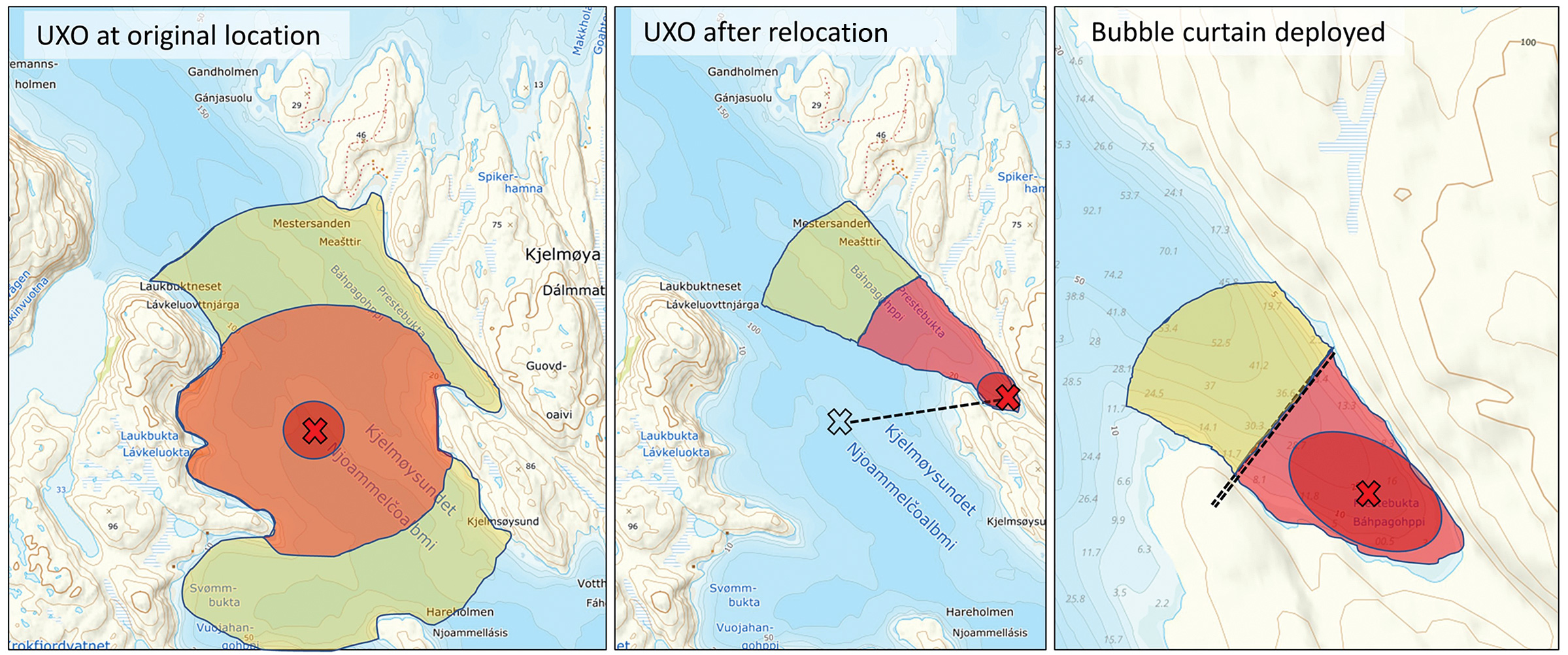
Figure 2. Illustration of how the ERW effect zones (i.e., mortality, injury, and stress/flight) could be reduced by relocation and the use of bubble curtains. Image courtesy of Geir P. Novik.
Next, we should study how high-order detonations are conducted and how their negative effects can be mitigated. As stated, some low-order operations will most likely result in high-order detonations, although a somewhat reduced effect can be expected, as some of the explosives could already be consumed by the preceding deflagration. Therefore some, if not all, of the safety measures for high-order detonations should also be observed for low-order operations. There are several relevant safety measures for mitigating the negative effects of high-order detonations. First, if possible, the object could be relocated to a suitable location in which the explosive effects are reduced. Several factors need to be observed, including depth, natural obstructions to reduce shock waves and noise, environmental conditions, infrastructure, safety distances, type of sediment, etc. The utilization of electronic mapping tools that include relevant information (e.g., environmental, infrastructure, etc.) could be helpful in calculating and assessing the potential explosive effects of high-order detonations in various locations. Bubble curtains, which consist of pumping compressed air through hoses laid on the seafloor, have proven to cushion underwater detonations by absorbing much of the energy of the blast and sound wave and effectively reducing the sound pressure and shock wave, thus substantially reducing the danger zone for marine organisms.43 Bubble curtains and natural physical barriers have been successfully used for many years as efficient tools for noise mitigation in several countries (e.g., Norway, Denmark, and the United States).
Nevertheless, the use of bubble curtains does have some major disadvantages and limitations, such as water depth and prevailing currents.44 They also require specialized training and sufficient time and resources to set up and run. Additionally, bubble curtains can be quite costly, which could deter a potential user from acquiring them, although increased adaptation of the system would play a key role in driving down costs, demonstrating reliability and fitness-for-purpose, increasing technical capacity, and addressing capability gaps.45 If there are multiple locations where high-order detonations will occur, the bubble curtains will need to be repositioned between locations. However, if the detonations take place in a favorable location, such as a bay, the entire strait could be covered by a bubble curtain, thus effectively eliminating most of the sound and shock waves resulting from underwater high-order detonations. So-called soft-start charges, or scare charges, are also regularly used in order to deter marine mammals and other marine life from the area before blast-in-place operations using high-order detonations are commenced in order to reduce the level of noise exposure and risk of injury.46 However, the soft-start procedure assumes that animals have an avoidance response and will move away from the source, but this has not yet been proven experimentally.47 Some mammals are known to ignore soft-start devices, and some may also be attracted by the initial weak sound and thus exposed to potential fatal explosive effects as the detonation commences. There is also concern that soft-start procedures may prolong the total duration of operations, possibly increasing the total amount of acoustic energy transmitted into the environment.48
In many countries, it is still common practice to use a range of different techniques, including both low-order deflagration and high-order detonation, to clear ERW as safely as possible while ensuring the utmost protection of the personnel, environment, infrastructure, and material. The risk is complex and multifaceted and includes a great number of unknowns that are dependent on several unique factors.49 The risks involved are made clear by the numerous unintentional explosions and accidents involving ERW all over the world each year.50 While the number of ERW seems limitless, unfortunately, the same is not the case when it comes to the available resources for clearing the munitions. Arguably, the most cost-effective disposal technique, high-order detonation, is an important tool in clearing ERW; however, with its inherent negative environmental impact in terms of explosive effects, it is quite clear that using the technique uncritically could do more harm than good. Nevertheless, relevant alternative techniques also have their limitations, such as increased demands in time and cost, increased risk of unintentional detonation, and a potentially devastating environmental impact in terms of the dispersal of toxic chemicals (i.e., low-order).
The obvious solution is to allow for a combination of various techniques. Based on the assessment of the unique locations, objects, environmental condition, available resources, and individual preferences (e.g., training and knowledge), and given the necessary space of possibilities, it would be possible to dispose of every object according to each individual case. Only by allowing for a certain degree of freedom is it possible to assess every object individually and to dispose of it utilizing a safe and practically feasible disposal technique with the least possible negative societal and environmental impacts. Sometimes, the only viable option could be to employ a low-order technique; other times, it could be to do a high-order detonation, even according to the environmental precautionary principle. In any case, great effort should be made to mitigate the inherent risks.
Conclusion
The first priority when dealing with ERW should be their recovery and safe disposal. In doing so, we should also make every effort to minimize the potentially negative societal and environmental impact while also prioritizing resources allocated to mitigating this threat. Only then would we be able to effectively reduce the societal risks related to ERW while also gaining more economic efficiency and a more favorable cost-to-benefit ratio.
While some countries and organizations already prohibit the use of high-order detonation as a suitable technique for disposing of ERW, and others are working toward a permanent ban, we must be cautious not to implement safety measures that could have less than the intended effect, no effect at all, or in the worst case, a negative effect. The priority should not be deciding whether we should use low-order or high-order techniques but assessing what would be the safest and most environmentally friendly option for every unique situation, given proper risk-mitigating actions. We must therefore take caution not to make good the enemy of the best.
A legal obligation not to employ, or even a regulation strongly recommending against, high-order detonation techniques while clearing ERW would effectively eliminate an option that could prove to be the safest, quickest, least resource-demanding and most environmentally friendly, which could ultimately result in an increased societal and environmental risk.
Geir P. Novik
Lieutenant Colonel
Norwegian Defence Research Establishment
 Lieutenant Colonel Geir P. Novik is a senior staff officer at the Norwegian Ministry of Defence, currently assigned to the Norwegian Defence Research Establishment. His previous assignments include duty as the MoD’s senior representative for defense exports and material management within the Norwegian defense sector; Senior Ammunition Inspector for the Army; Instructor at the Norwegian Joint Ammunition and Explosive Ordnance Disposal (EOD) school, as well as numerous years as an ammunition technical officer and EOD/improvised explosive device disposal (IEDD) operator. LTC Novik earned his Master of Science at NORD University with a specialization in societal security and terrorism studies. He is currently attending a doctoral program in Science and Technology at the University of Stavanger with a specialization in risk management and societal safety particularly related to unexploded ordnance and explosive remnants of war.
Lieutenant Colonel Geir P. Novik is a senior staff officer at the Norwegian Ministry of Defence, currently assigned to the Norwegian Defence Research Establishment. His previous assignments include duty as the MoD’s senior representative for defense exports and material management within the Norwegian defense sector; Senior Ammunition Inspector for the Army; Instructor at the Norwegian Joint Ammunition and Explosive Ordnance Disposal (EOD) school, as well as numerous years as an ammunition technical officer and EOD/improvised explosive device disposal (IEDD) operator. LTC Novik earned his Master of Science at NORD University with a specialization in societal security and terrorism studies. He is currently attending a doctoral program in Science and Technology at the University of Stavanger with a specialization in risk management and societal safety particularly related to unexploded ordnance and explosive remnants of war.
